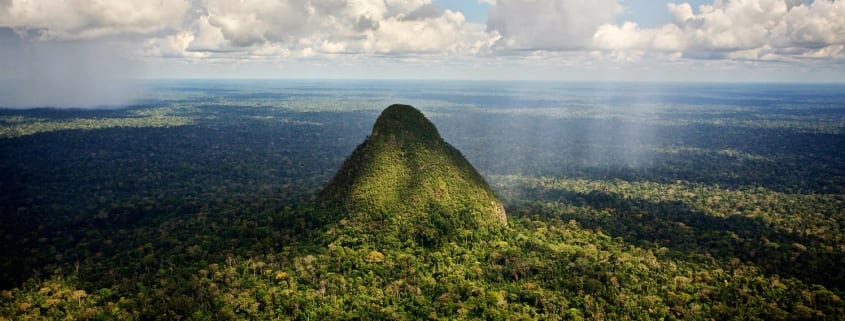Expanding Community Protection, Securing Carbon in Peru’s Amazon Rainforest
Rainforest Trust and its local partner Center for the Development of an Indigenous Amazon (CEDIA) expanded protection around Sierra del Divisor National Park in Peru by an additional 42,867 acres in February 2018.
These new acres were added by helping three campesino communities (Monte de los Olivos, Canelos and Alto Perillos) obtain proper land titles as part of a larger effort to title over 50 community territories that will form a firewall against colonization around Sierra del Divisor National Park and the soon-to-be White Sands National Reserve.
“The rainforests in the Amazon of Peru are home to an extraordinary concentration of biodiversity, and home to many indigenous communities. Sadly the forests and peoples of the Amazon have all too often suffered from the relentless campaign to deforest and destroy this land,”
said Rainforest Trust CEO Dr. Paul Salaman.
“So when Rainforest Trust helps indigenous peoples secure their legal rights to their land, it not only gives them rights to block mining and logging, but importantly gives them one of the most basic of human rights. Land is a cross-cutting issue that directly impacts a number of human rights. For indigenous communities, land is a source of livelihood, central to their economic rights and tied to social and cultural rights.”
It is estimated that there are over 500 indigenous communities in the entire Peruvian Amazon that are still in need of proper land titles. However, this four-year project with CEDIA, which is expected to be completed next year, will provide land titles in all communities in the west part of Sierra del Divisor and in the Tapiche and Blanco River Basin north of the park.
This security not only benefits the communities, but as it empowers landowners to prevent deforestation, it will also have a positive impact on the planet. According to new research, the Peruvian Amazon has historically been a tremendous carbon sink, with researchers at the Carnegie Institution for Science recently determining the aboveground carbon storage at 6.83 billion metric tons. However, as deforestation and degradation increases in Peru, these same forests are becoming carbon sources.
The Monitoring of the Andean Amazon Project (MAAP) project took this information and determined that 59 million metric tons of carbon were lost during the last five years. And yet, it also showed that land protection can solve this problem, highlighting Sierra del Divisor National Park as one example.
“The article reports that Loreto and Ucayali are the regions with the highest carbon loss, and Sierra del Divisor is effectively safeguarding more than 3 million acres shared by these two regions,”
said Dani Enrique Rivera Gonzalez of CEDIA.
Climbing from an immense swath of rainforest, the Sierra del Divisor Mountain Range stretches more than 600 miles along the Peru-Brazil border in the heart of the Amazon Basin. Complete with plunging waterfalls, dormant volcanic cones, wild rivers, pristine forests and uncontacted tribes, this largely unknown and unexplored range is one of the Amazon’s last true wildernesses. The region is home to a biological community rich in rare and threatened species, including 38 mammals such as Jaguars, South American Tapirs and Red Uakari Monkeys. There are also believed to be 3,500 plant species, 300 fish species, 365 bird species and 109 amphibian species.
Through the generous support of our friends around the world and the SAVES Challenge, this project is a success. A special thank you to Leslie H. Danoff and Lawrence S. Robbins, GreaterGood.org, Luanne Lemmer and Dr. Eric Veach, Philip May and Leslie Santos and Brett Byers for their leadership gifts.




